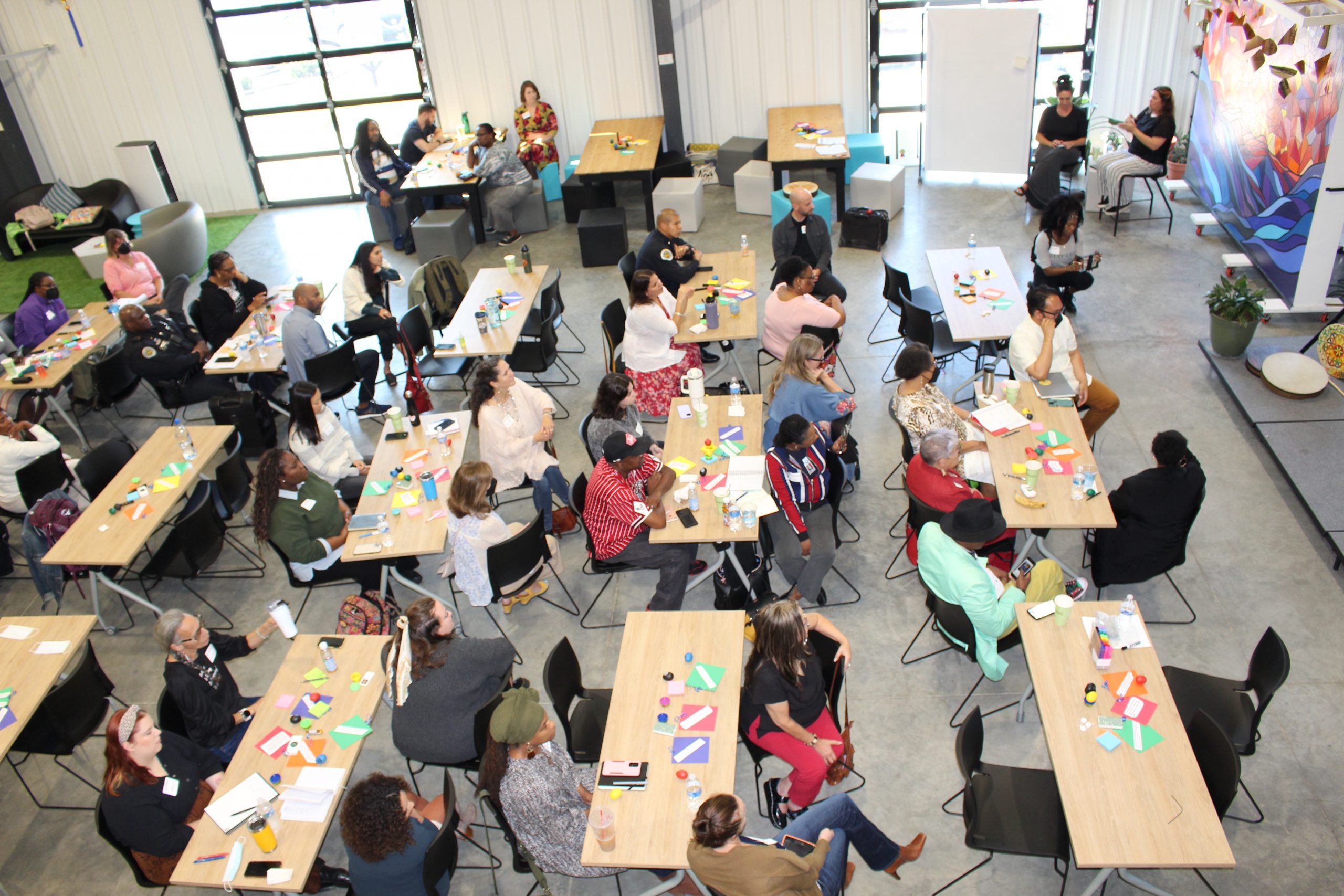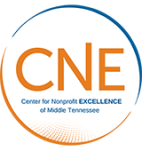
Community Impact
At CNEMT we believe that the greatest impact comes with collaboration. Whether it’s a multi-sector initiative or the sharing of best practices between nonprofits, collaboration can break down silos and amplify your efforts. Explore our vision of a connected community through the opportunities below.
- Gather with nonprofit and community leaders.
- Share successes and challenges with your peers.
- Collaborate for increased impact.
Community Impact
Certificate
The Community Impact certificate is designed for community leaders who are interested in amplifying the impact of their mission by mobilizing their community for population- and systems-level changes. This includes the use of the collective impact framework as well as community organizing and policy or electoral advocacy movements that seek to “move the needle” on complex issues.
Community Impact
Community Conversations
CNEMT’s Community Conversations are a series of virtual gatherings focused on building and sustaining collaborative movements in times of uncertainty and unpredictability.
Anyone engaged in a collaborative effort is encouraged to attend these free events.
Community Impact
Resources
Disaster Relief Resources
Local Resources
- 2021 Nonprofit Economic Impact Study
- Business Engagement Guide
- Community Needs Evaluation 2018, Metro Social Services
- Know Your Community: Socioeconomic Characteristics of Metropolitan Council Districts, Metro Social Services, 2019
- Nashville Health Department
- Healthy Nashville: The data portal of Healthy Nashville. The Healthy Nashville community health improvement process is a community-based effort to improve the health and well-being of Davidson County residents.
- Building Strong Brains Case Study
State Resources
- Families First (TANF): TN Department of Health and Human Services
- SNAP (Supplemental Nutrition Assistance Program)
National Resources
- U.S. Census Bureau
- American Fact Finder: Find popular facts (population, income, etc.) and frequently requested data about your community.
- Community Indicators Consortium: Provides resources and tools to help communities and practitioners advance the practice and effective use of community indicators.
- Kids Count Data Center-Annie E. Casey Foundation
Advocacy Resources
- The Sycamore Institute: Tennessee’s nonpartisan public policy and budget research center
- State Legislative Website: Track bills, connect with lawmakers, watch committee meetings
- The Tennessee Journal: Subscription-based weekly newsletter that covers all things state politics
- Tennessee Legislation Service: Fee-based bill tracking service
- Alliance for Justice’s Bolder Advocacy: Information and resources for nonprofits to effectively and legally engage in advocacy. Their free advocacy capacity tool (ACT!) is a great way to evaluate where your advocacy strengths and opportunities are.
Collective Impact Resources
- Collective Impact Forum: A network of individuals coming together to share experience and knowledge to accelerate the effectiveness and adoption of collective impact.
- Tamarack Institute: Includes a large resource library for Collective Impact and other collaborative initiatives based on many years of work with initiatives in the U.S., Canada and abroad.
- The Aspen Institute Forum for Community Solutions: Focused on collaborative community approaches to solving community challenges, they have a growing resource library.
- The Harwood Institute: Built on 30 years of experience, The Harwood Institute provides tools, resources and coaching to turn outward and build and authentically engage community in making progress on complex challenges.
- Community Indicators Consortium: Resources and tools to help communities and practitioners advance the practice and effective use of community indicators.
- Community Conversations Workbook-The Harwood Institute: Core to authentic community engagement is community conversations. Easily adapted, this workbook was developed by the Harwood Institute using thirty years of experience to help communities become skilled in community conversations.
- Community Vision for Change: This exercise helps develop a strong shared vision which creates a sense of commonality, builds trust amongst people and gives coherence to diverse activities.
- Assessing Your Community Context: This worksheet will help guide a conversation about how to move your ideas into an action plan and also enable you to gain greater clarity about the issue or opportunity you are trying to address.
- Refining Your Ideas: This tool will help you clearly articulate your ideas, identify key benefits or features for specific stakeholders or audiences, and reflect on what is required to go from idea to impact.
- Foundations for Developing A Common Agenda: A commonly expressed challenge is how to get to a common agenda for collective impact. This guide will support communities with milestones and resources that can help lay foundations for developing a community-wide common agenda.
- Common Agenda Framework: This tool will help your collective get greater clarity about the shared issue you want to address.
- Exploring Our Gives and Gets: This exercise offers an opportunity for participants to fully explore fully explore and articulate their own personal and organizational needs and potential benefits, providing a constructive way of ensuring that the hopes and needs of each individual team member is heard, understood and integrated into the team’s vision and action plan.
- Planning Your Backbone Support: This tool is designed to help you to assess and further develop your Collective Impact initiative’s backbone support infrastructure.
- Backbone Starter Guide: A Summary of Major Resources about the Backbone: A resource for those thinking about how to start a backbone, or for established backbone teams who are bringing in new members and partners.
- Steering Committee Toolkit: This toolkit includes a number of tools for the formation of a Steering Committee. This toolkit includes a guide for identifying steering committee members, descriptions of steering committee member responsibilities, a steering committee governance agreement, sample steering committee meeting agendas, and discussion guides.
- How to Lead Collective Impact Working Groups: A Comprehensive Toolkit
- The 4 M’s of Effective Communication: This tool is designed to help you to map out the most effective approach to continuously communicate how your Collective Impact plan is evolving; the progress that is made on moving forward the shared measures; and how best to share lessons learned with one another.
- Securing Funding for the Backbone Role: Lessons from the Field: While some funders have a nuanced understanding of the immense value of collective impact initiatives, supporting the backbone is a different approach for many philanthropic and public funding sources, which can make it challenging to get the consistent, long-term investments needed to help effect population-change. In March 2019, the Collective Impact Forum surveyed members to understand trends in backbone funding, what challenges organizations are facing, and what fundraising strategies are working well.
- Funding the Long Game in Collective Impact: In this new article, Paul Schmitz (Collective Impact Forum and Leading Inside Out) shares about a new approach to funding developed by the Advancing Healthier Wisconsin Endowment (AHW) that explores how an initiative can invest in the long-term development of the agenda, capacities, and engagement necessary to achieve collective impact.
- Bolder Goals, Bigger Breakthroughs: The past year has brought a chorus of cries challenging the status quo in the nonprofit and philanthropic sectors in pursuit of greater impact… the sector needs to shift from setting modest goals that provide short-term results to setting bold goals that, while harder to achieve, tackle the root of social problems. Here, we offer reflections on our original three recommendations—setting a bold goal, opening your circle, and changing the conversation—to make significantly greater progress.
- Putting Community in Collective Impact: Five characteristics of civic culture that collective impact efforts must address.
- Five Questions to Ask and Answer When Practicing Community Engagement: Use this set of strategic questions to ask and answer when practicing community engagement, especially if you seek to do the work in an intentional, strategic, and positively impactful way.
- The Challenge of Negotiating Race in Cross-Sector Spaces: We must take on the difficult work of accounting for race and racism in our collective change-making endeavors or face the risk of failing to undo systemic inequities.
- When Collective Impact Has an Impact: A study of 25 initiatives in the U.S. and Canada to determine how collective impact how Collective Impact is implemented across a broad range of communities and topic areas and to what extent and under what conditions does the collective impact approach contribute to systems and population changes.
- Four Phases of Poverty Reduction in Saint John: Cities Reducing Poverty has identified that successful poverty reduction efforts progress through four key phases and share similar milestones. This case study details Saint John, New Brunswick’s journey through each phase of progress, with the goal of providing other collaboratives with a sense of how the work can unfold, including which challenges may be encountered along the way.
